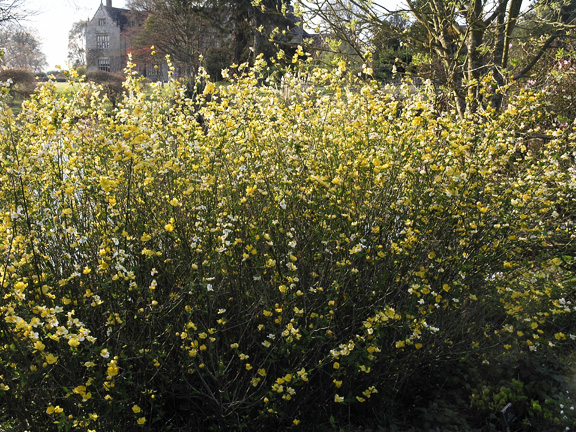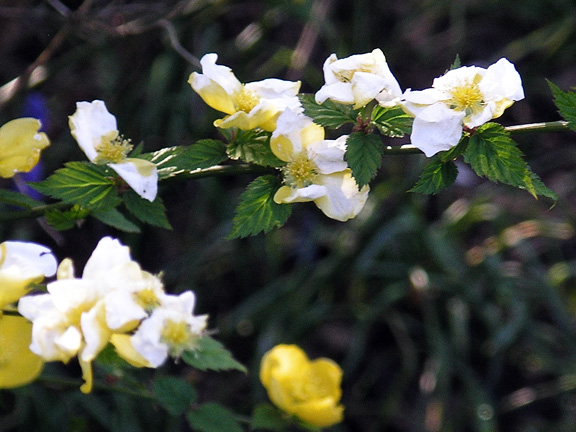
Woody > Kerria > Kerria japonica > Kerria japonica 'Golden Guinea'
Kerria japonica
'Golden Guinea'
Japanese Rose
Mike's
Opinion


"
Golden Guinea is a weaker cultivar of Kerria japonica that might be a little problematic to grow in Ontario gardens. Nonetheless, it is an interesting plant if grown in a grouping, where its bicoloured flowers will produce a substantial show.
Michael Pascoe, NDP., ODH., CLT., MSc. (Plant Conservation)
"
| Family |
| Rosaceae |
| Genus |
| Kerria |
| Species |
| japonica |
| Cultivar |
| 'Golden Guinea' |
| Category |
| Woody |
| Type |
| Shrub (deciduous) |
| Pronunciation |
| USDA Hardiness Zone |
| 5 – 8 |
| Canadian Hardiness Zone |
| 6 |
| RHS Hardiness Zone |
| H7 - H4 |
| Temperature (°C) |
| -32 |
| Temperature (°F) |
| -25 |
| Height |
| 1 – 2 m |
| Spread |
| 1 – 3 m |
Photographs
Description and Growing Information
Flowering Period
| General Description |
| Loosely mounded plant with numerous slender, zigzagging branches that emerge at ground level. Yellow cream flowers and colourful green stems make an attractive plant. |
| Cultivation |
| Tolerates any soil type, grows well in shady corners and when soil moisture is adequate. |
| Shape |
| Loosely arching form. |
| Growth |
| Medium |
| ID Characteristic |
| Smooth, uniformly green stems, buds are dark and contrast with the stem, the stems have a zigzag pattern of growth to them. Flower is semi–double and turns from yellow to cream. |
| Pests |
| Leaf and twig blight, leaf spot, canker, root rot. |
| Habitat |
| Horticultural origin. |
| Bark/Stem Description |
| A green colour during the growing season, but turning yellow–green in winter. |
| Flower/Leaf Bud Description |
| Green-brown or coloured varied, usually 5 exposed scales. |
| Leaf Description |
| Simple, alternate leaves, ovate to lance-shaped, bright green colour. |
| Flower Description |
| Bright yellow, 3.8 cm across, 5 petaled, in full sun the colour fades to a bleached yellow or cream. |
| Fruit Description |
| Achene, seldom seen, not very showy. |
| Colour Description |
| Stems are distinct yellowish green to bright green in winter, otherwise a rich clear green. Leaves are a light green while flowers are a cream–yellow mix. |
| Texture Description |
| Fine in winter and smooth. |
| Propagation |
| Through cuttings in late spring to early summer. |


